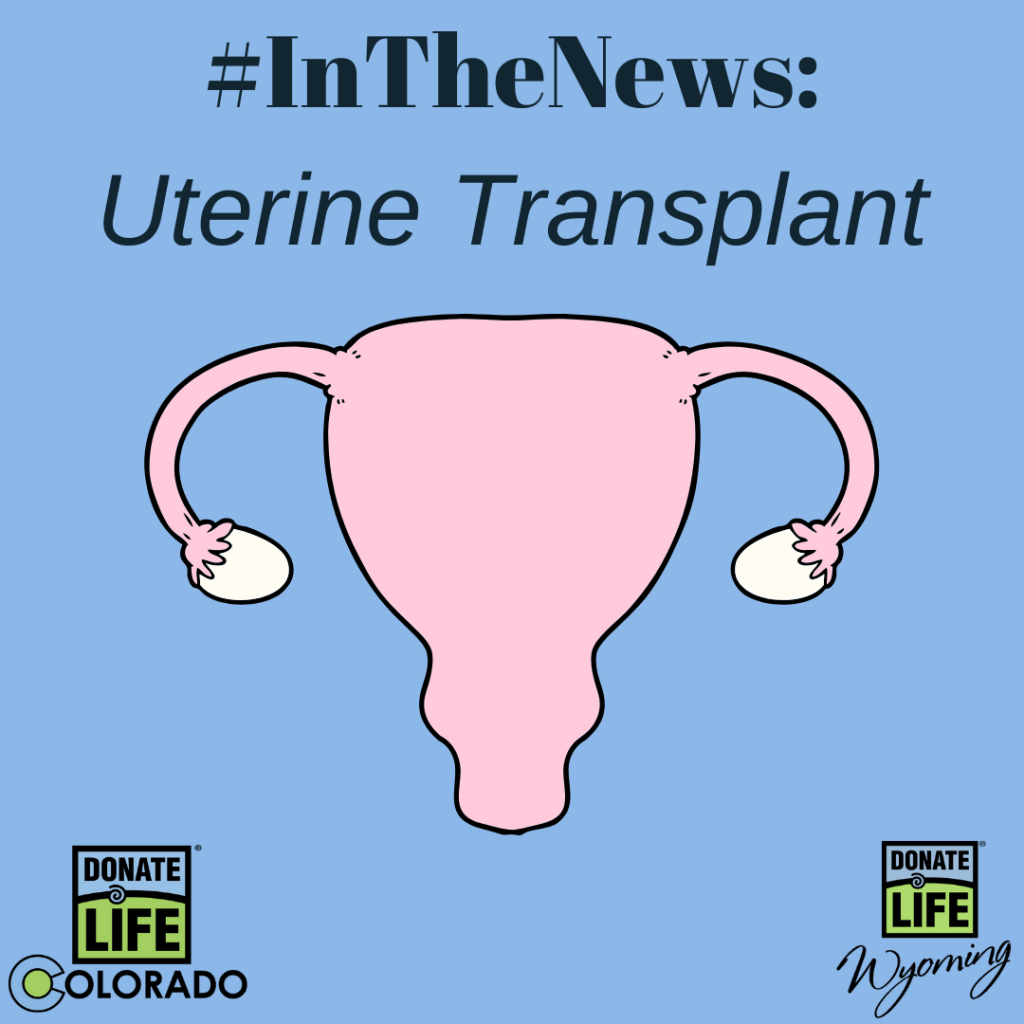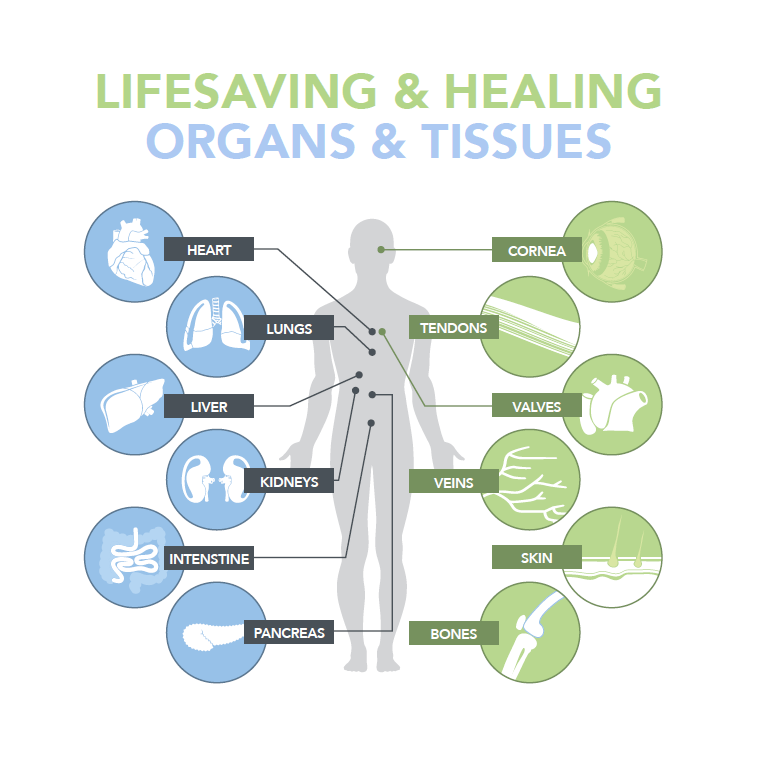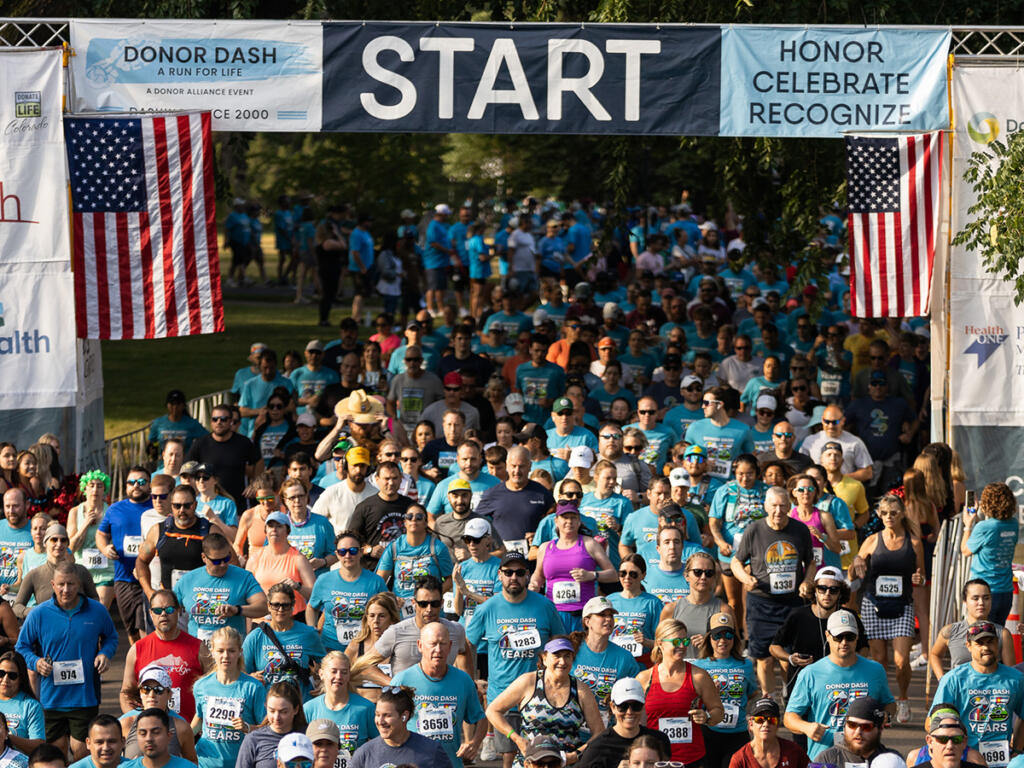Donation Essentials Blog
#InTheNews: Uterine Transplants
One of the biggest stories in organ donation and transplantation so far this year has been the story of Jennifer Gobrecht, the second woman in the U.S. to have a uterus transplant from a deceased donor. You may have seen her story featured in any number of major news outlets across the country, including the New York Times, CNN and most recently People Magazine. So, what is a uterine transplant and how does it compare to other organ transplants? Let’s break it down.

What is a Uterine Transplant?
Uterus transplants are currently rare and still relatively new but have already helped some women who otherwise couldn’t carry their own children. The procedure involves transplanting a healthy uterus from a living or deceased donor into a recipient that has been diagnosed with Uterine Factor Infertility (UFI).
A handful of uterus transplants have taken place around the world over the last few years. The first uterine transplant performed in the U.S. was in Cleveland in 2016, but failed due to complications and the uterus was removed. Penn Medicine began conducting uterus transplants with more success in 2017 with the start of UNTIL (Uterus Transplantation for Uterine Factor Infertility). The practice has since expanded to include other programs throughout the country.
Why would a woman need a uterus transplant?
According to the Penn Medicine, all participants in these studies and programs suffer from Uterine Factor Infertility (UFI), meaning they were either born without a uterus—as in Jennifer’s case—or have had their uterus removed for medical reasons.
Candidates for a transplant go through a thorough medical evaluation before being listed for a transplant with the United Network for Organ Sharing (UNOS). While uterine transplantation can occur using both living and deceased donors, most programs in the US work with living donors. Like all organ and tissue transplants, uterine donation is an act of altruism. However, while intended to help give and sustain a life through pregnancy, uterine transplants are not lifesaving and the uterus will eventually be removed from the recipient following a successful pregnancy or pregnancies.
Does Donor Alliance facilitate uterine transplants?
Currently, there aren’t any uterine transplant programs in our region, and Donor Alliance doesn’t recover uteruses in Colorado and Wyoming. If we were to begin facilitating these types of transplants, like other rare transplants including vascular composite allografts (face and hand transplants), the donation would only take place after conversations and authorization by the next of kin. State donor registries do not pertain to the VCA or uterine transplants, only to the standard transplantable organs and tissues.
Get the facts on the donation process, including which transplants we facilitate.
As always, you can sign up to be an organ, eye and tissue donor online anytime at Donate Life Colorado or Donate Life Wyoming.


